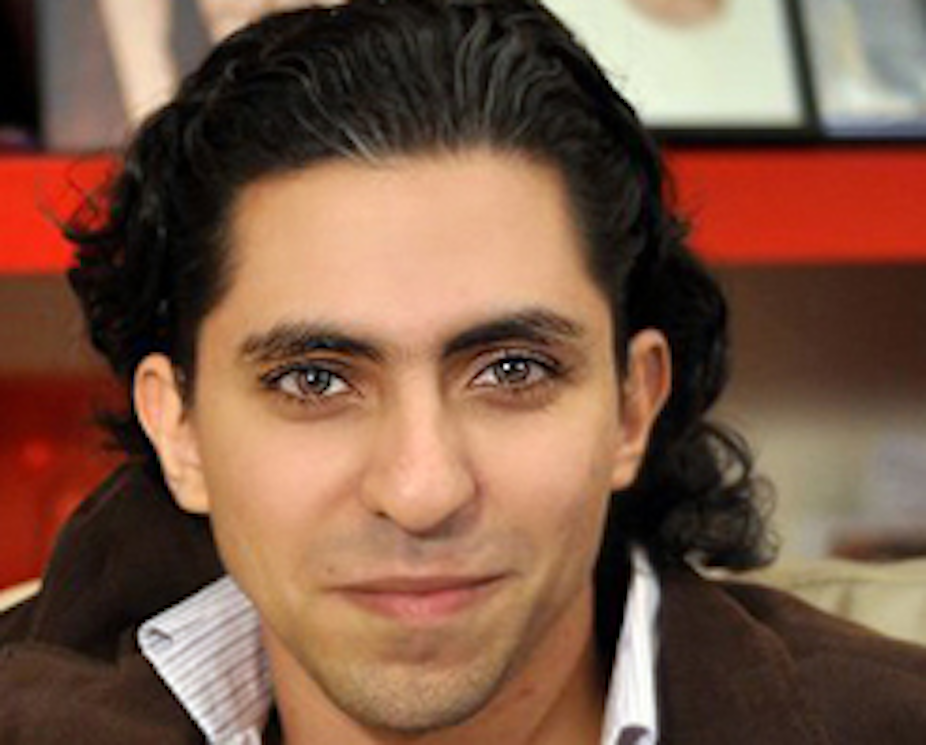It has been announced that, for medical reasons, the Saudi Arabian authorities have decided to postpone the ongoing punishment of Raif Badawi.
The 31-year-old blogger was supposed to have received a second dose of 50 lashes to be delivered, in public, after Friday prayers in his home town of Jeddah. But according to Amnesty International, which has taken up Badawi’s cause, he was seen by a prison doctor in the morning. The doctor concluded that the wounds from his flogging the previous week had not yet healed sufficiently for a second lot to be delivered.
His wife Ensaf Haidar told reporters: “The prison doctor saw Badawi’s health does not allow his flogging today.”
But the punishment stands – and if the Saudi government doesn’t bow to international pressure, it is scheduled to continue, weekly, for a further 18 weeks.
A weekly flogging of 50 lashes is likely to have short, medium and long-term effects on an individual and the recurrent nature of the punishment will produce increasingly severe local trauma to the soft tissue area affected. This is likely to include severe bruising, cuts of varying size and depth with blood loss, localised swelling, inflammation and severe pain.
No time to heal
Wounds and soft tissue injury such as this would normally take two to four weeks to fully recover depending on the size and depth of the affected area. Over the period of a week, the affected area is unlikely to have sufficient time to recover from the previous lashings and therefore subsequent lashings will be superimposed on already damaged tissues which are likely to include open wounds. This will further worsen the condition of the soft tissues, leading to larger areas being affected, deeper wounds, increased pain and further prolonging healing time.
This will lead to delayed healing and longer term problems with the wounds and affected areas. Ultimately, this would take many weeks to recover from and scarring is inevitable. The soft tissues affected are likely to be further compromised by the lack of wound care in between the episodes of lashing. Normally open wounds would be treated with cleansing and covering to prevent infection and promote wound closer.
In more severe situations, wounds may require stitching. If wounds become infected, then it would be usual to treat them with antibiotics. Swelling and inflammation may benefit from both rest and pain killers to treat the affected areas and allow time for them to resolve.
Risk of infection
It is unlikely in the prison environment that Badawi will receive appropriate wound care or medication for his condition such as pain killers or antibiotics. In addition, the conditions in prison are likely to be dirty making the wounds vulnerable to becoming dirty as well.
This will extend healing time and also increase the likelihood that Badawi will develop infection as a result of his injuries. If untreated, such infections can produce generalised systemic illness and ultimately put the his life at risk.
Healing could be further compromised by the lack of adequate nutrition in prison – in order to promote wound healing, adequate hydration and nutrition is vital. The lack of such, would produce slower healing and increase the risks of complications developing such as infection and skin necrosis.
The weekly loss of blood from wounds may lead to anaemia developing in the medium to long-term. If left untreated this would lead to other complications affecting the ability of the wounds and affected tissues to heal, but also lead to Badawi becoming weaker, feeling more unwell and generally reducing his capacity to deal with the repeated traumatic insult that weekly floggings would produce.
He may be relatively young and fit, but the human body is not designed to take this kind of regular and sustained punishment and 20 weeks of this treatment risks doing Badawi permanent damage if not eventually killing him.

